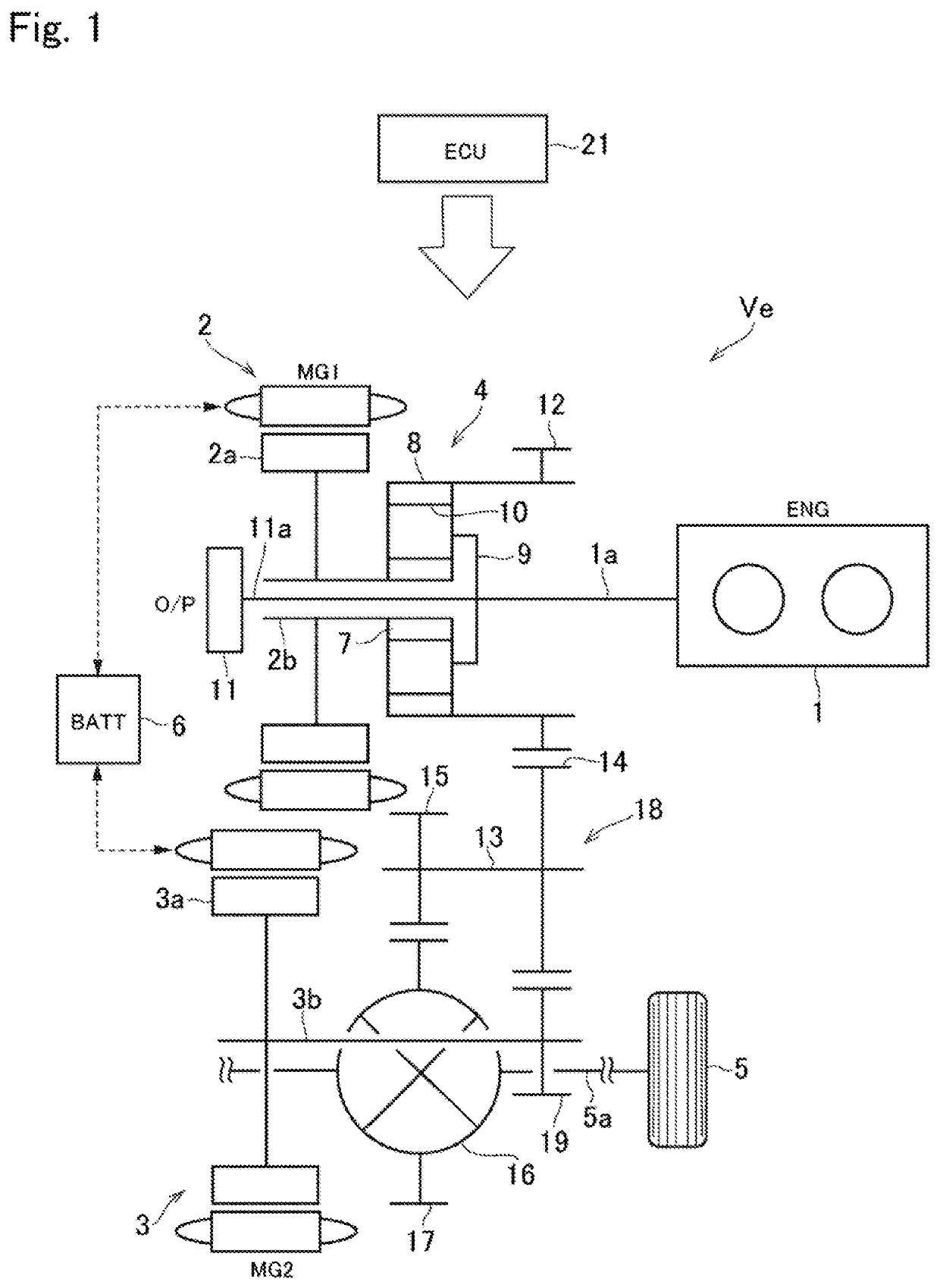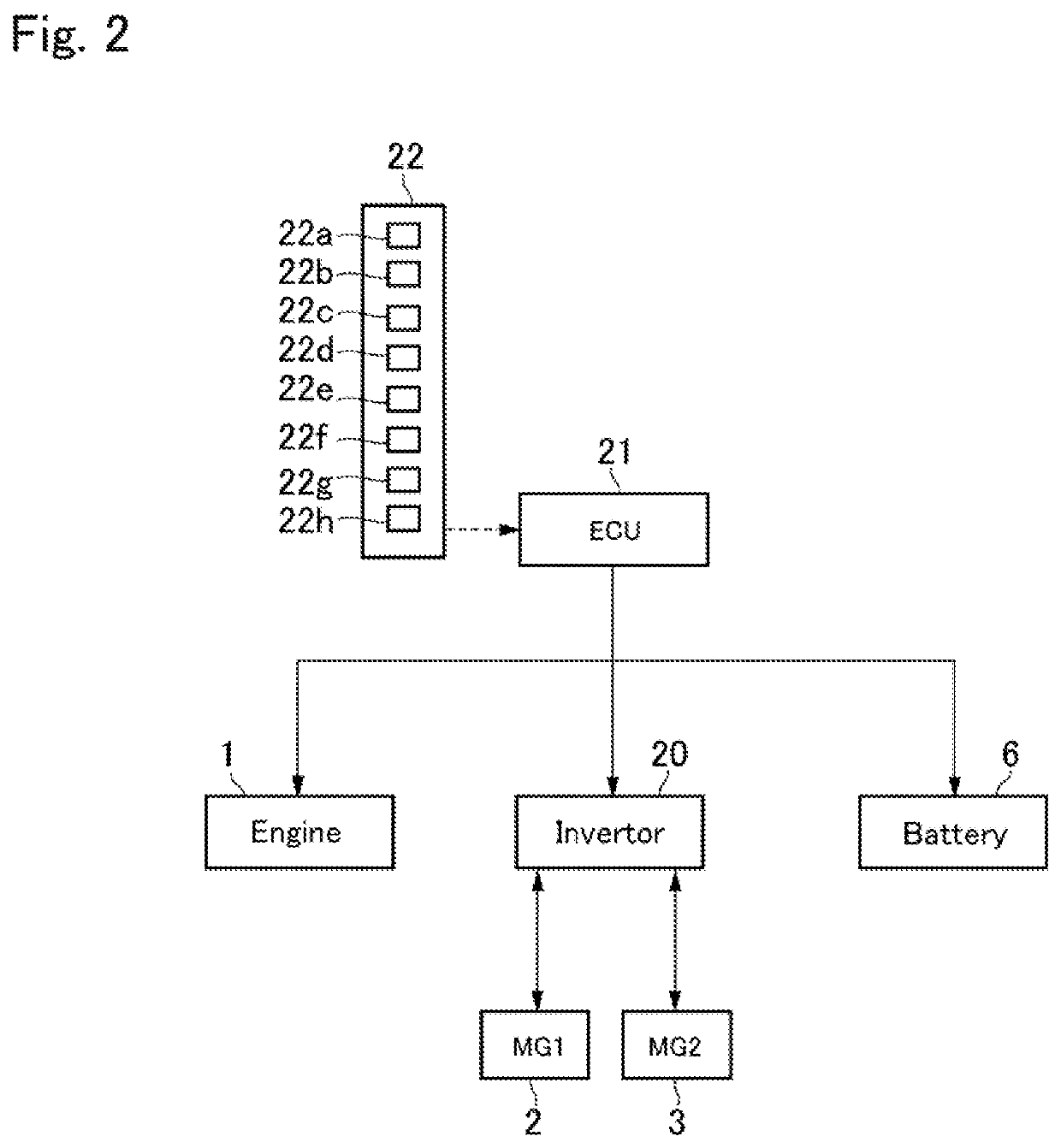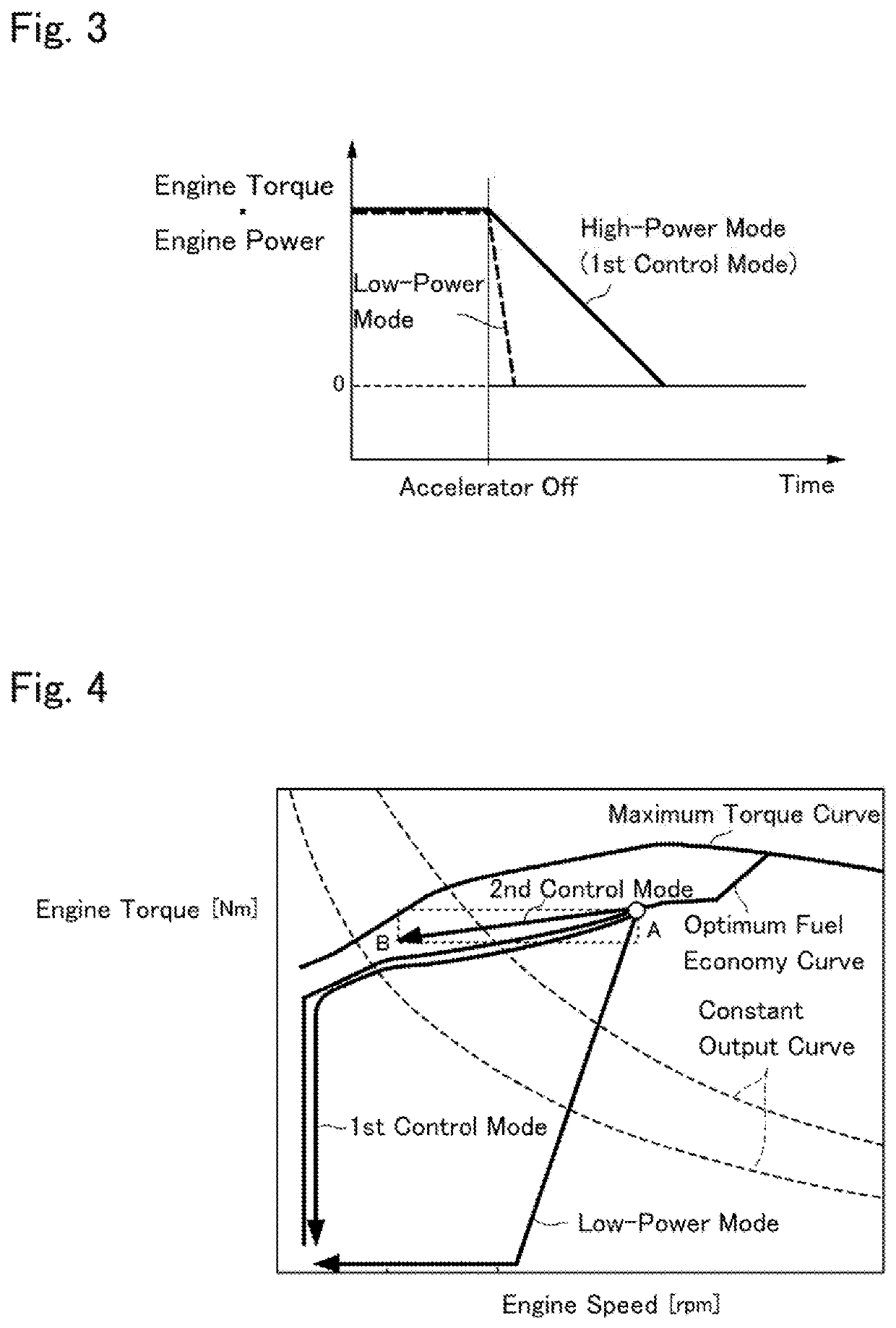Control system for hybrid vehicle
a control system and hybrid technology, applied in the direction of propulsion parts, external condition input parameters, transportation and packaging, etc., can solve the problems of motor generator and battery not being protected properly, overcharging of batteries, overheating of motor generators, etc., to reduce engine speed and torque, reduce engine torque and power, and reduce engine intake.
- Summary
- Abstract
- Description
- Claims
- Application Information
AI Technical Summary
Benefits of technology
Problems solved by technology
Method used
Image
Examples
Embodiment Construction
)
[0038]Preferred embodiments of the present disclosure will now be explained with reference to the accompanying drawings. Referring now to FIG. 1, there is shown one example of a powertrain of a hybrid vehicle (as will be simply called the “vehicle” hereinafter) Ve to which the control system according to the exemplary embodiment of the present disclosure is applied. A prime mover of the vehicle Ve comprises an engine (referred to as ENG in FIG. 1) 1, a first motor (referred to as MG1 in FIG. 1) 2, and a second motor (referred to as MG2 in FIG. 1) 3. In the vehicle Ve, an output power of the engine 1 is distributed to the first motor 2 and drive wheels 5 through a power split mechanism 4. An electric power generated by the first motor 2 may be supplied to the second motor 3 to generate torque, and a drive force generated by the second motor 3 may be delivered to the drive wheels 5.
[0039]Each of the first motor 2 and the second motor 3 is a motor-generator that is operated not only a...
PUM
 Login to View More
Login to View More Abstract
Description
Claims
Application Information
 Login to View More
Login to View More - R&D
- Intellectual Property
- Life Sciences
- Materials
- Tech Scout
- Unparalleled Data Quality
- Higher Quality Content
- 60% Fewer Hallucinations
Browse by: Latest US Patents, China's latest patents, Technical Efficacy Thesaurus, Application Domain, Technology Topic, Popular Technical Reports.
© 2025 PatSnap. All rights reserved.Legal|Privacy policy|Modern Slavery Act Transparency Statement|Sitemap|About US| Contact US: help@patsnap.com



